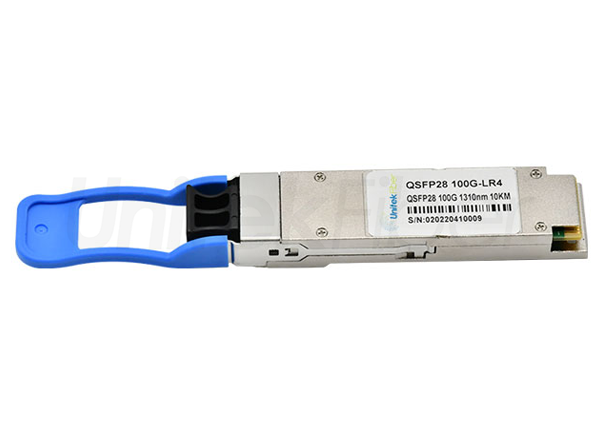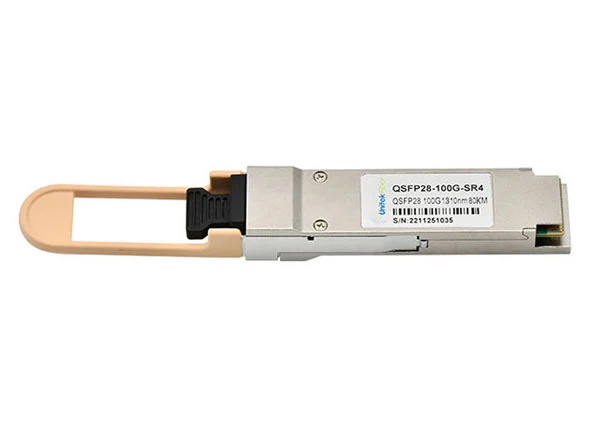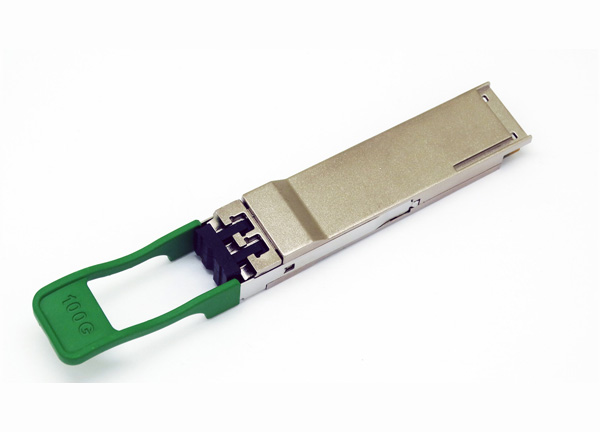
100G QSFP28 optical transceiver utilizes four high-speed differential signaling channels with data rates from 25 Gbps to 40 Gbps. It is designed for 100G Ethernet, EDR InfiniBand, and 32G Fibre Channel applications, offering a high-density and high-speed solutions for data centers and high-performance computing (HPC) networks.
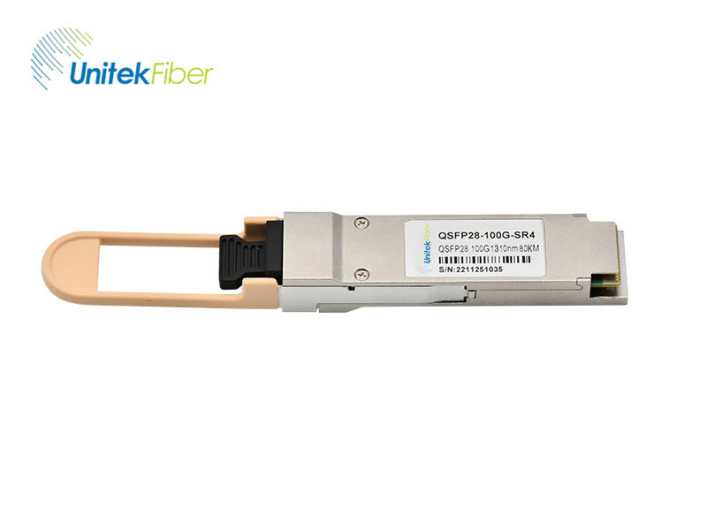
Q: What is a 100G BiDi Optical Transceiver?
The 100G BiDi optical module is a QSFP28 single-mode bidirectional transceiver designed for 100G Ethernet applications. Each optical port on a BiDi QSFP28 module contains a transmitter and receiver, enabling full-duplex 50Gbps transmission and reception over a single optical fiber between interconnected network devices such as switches and routers. It delivers a cost-effective and reliable solution for data communication and interconnect applications.
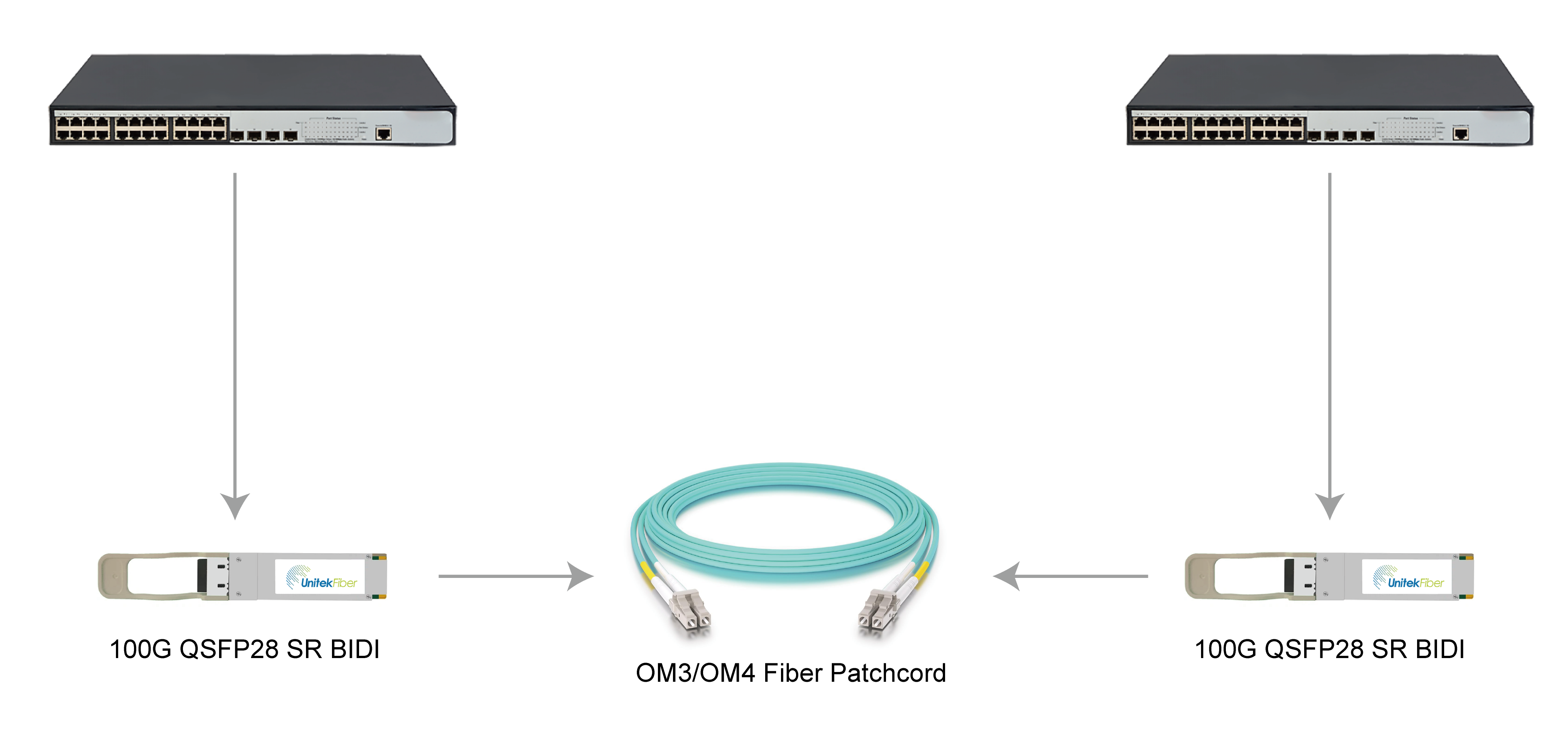
Q1: What is the operating temperature range of 100G QSFP28 transceiver modules?
A: The standard operating temperature range for commercial-grade 100G QSFP28 optical transceivers is 0°C to 70°C, while the standard operating temperature range for industrial-grade modules is -40°C to 85°C. Commercial-grade transceiver modules are generally used. Some data centers also use 100G optical transceivers with an operating temperature range of 20°C to 50°C for lower costs.
Q2: Are there dual-rate 100G optical transceivers to avoid high cost when upgrading?
A: Yes, there are 100G/112G and 40G/100G dual-rate fiber optical modules. The QSFP-100/112G dual-rate optical transceiver is designed for 100GBASE Ethernet and 4x 28G OTN client interfaces. Its low power consumption makes it ideal for telecommunications and 5G wireless network applications.
Q3: What are the differences between QSFP28, QSFP+, 100G CFP, and QSFP-DD?
A: The main differences between the four fiber optical modules are as follows:
Form Factor | QSFP28 | QSFP+ | 100G CFP | QSFP-DD |
Number of Electrical Interface Channels | 4 | 4 | 4 | 4 |
Single Channel Rate | 25Gbps | 10Gbps | 25Gbps | 25Gbps/50Gbps |
Modulation Technology | NRZ | NRZ | NRZ | NRZ/PAM4 |
Application | 100G Ethernet | 40G Ethernet | 40G/100G Ethernet | 400G Ethernet |
Q4: What are the applications of QSFP28 100G optical modules?
A: Depending on the transmission distance, 100G QSFP28 transceiver modules can be used in various scenarios, including inter-rack, inter-switch, and long-haul telecommunications.
Q1: Can QSFP+ optical modules be used in QSFP28 ports?
A: Yes, 100G QSFP28 ports can generally use either QSFP+ or QSFP28 fiber optical modules, as both share the same physical form factor. Depending on the transceiver type, a QSFP28 transceiver module can support breakout configurations with 4×25G or 4×10G lanes. This means that QSFP+ optical modules can be used in QSFP28 ports at a reduced data rate of 40G. However, QSFP28 modules cannot be used in QSFP+ ports, as the latter cannot handle the higher 100G data rate.
Q2: Can 100G QSFP28 transceiver module interfaces interoperate with SR10-based 100GbE?
A: No. The QSFP28 form factor provides only four electrical lanes, which is insufficient to support the 10-lane electrical interface required by SR10-based 100GbE. QSFP28 fiber optical modules are designed to support either 4×10G or 4×25G electrical interfaces, enabling operation as 4×10GbE or 4×25GbE links. They do not support the 10×10GbE configuration used by SR10. Therefore, 100G QSFP28 transceiver module interfaces are not interoperable with SR10-based 100GbE modules.
Q3: Can QSFP28 optical modules be used with CFP optical modules?
A: Yes, QSFP28 and CFP fiber optical modules can interoperate as long as they support the same 100G Ethernet standards, wavelength, and transmission specifications. While the two form factors differ in size and interface type, they can function together through compatible optical links when properly matched transceivers are used at both ends.
Q4: How can I achieve a 100G to 4x 25G breakout application?
A: A 100G to 4x 25G breakout can be implemented by connecting one QSFP28 SR4 transceiver to four SFP28 optical transceivers using breakout cable. Alternatively, 100G AOC cables or DAC cables with breakout configurations can also be used to achieve the same functionality.
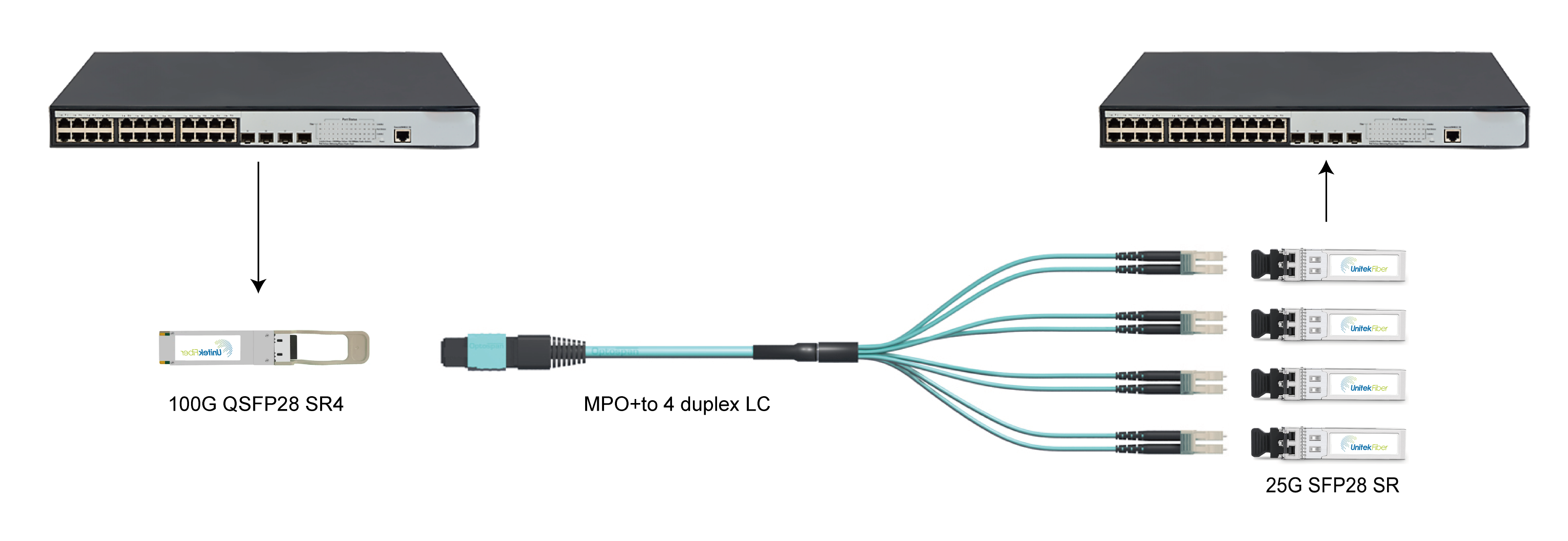
Q5: Does a 100G QSFP28 optical module require FEC functionality?
A: Not all 100G QSFP28 optical modules require Forward Error Correction (FEC), as the error correction code process inevitably causes some packet latency. FEC improves data communication reliability by correcting errors during signal transmission, which allows the receiver to reconstruct data when errors occur during transmission. FEC is relatively costly in optical module design and is rarely used.
UnitekFiber is your reliable partner for fiber optic products, we have extensive manufacturing experience in fiber modules, providing you a wide variety of transceiver modules, including multimode, singlemode, BIDI, CWDM and so on. If you have any questions or would like more information, please feel free to contact us.

